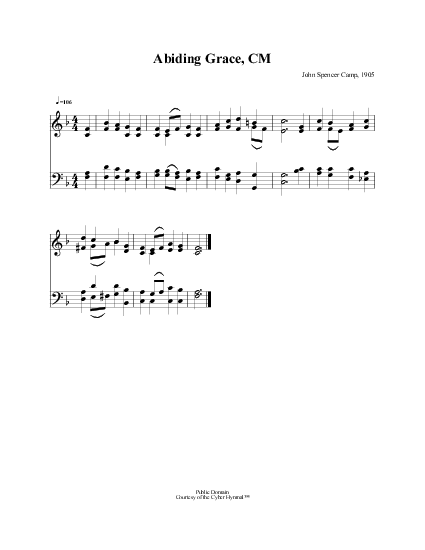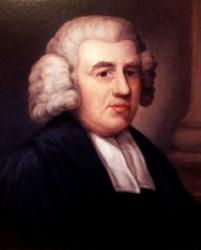- |
User Links
I Am the Resurrection and the Life

I am, saith Christ, your glorious Head
Author: John NewtonTune: ABIDING GRACE
Published in 7 hymnals
Printable scores: PDF, Noteworthy ComposerAudio files: MIDI
Representative Text
1 “I am,” says Christ, “your glorious Head,”
(May we attention give,)
“The Resurrection of the dead,
The life of all that live.
2 “By faith in me the soul receives
New life, though dead before;
And he that in my name believes,
Shall live to die no more.
3 “The sinner sleeping in his grave
Shall at my voice awake,
And when I once begin to save,
My work I’ll ne’er forsake.”
4 Fulfil thy promise, gracious Lord,
On us assembled here;
Put forth thy Spirit with the word,
And cause the dead to hear.
5 [Preserve the power of faith alive
In those who love thy name;
For sin and Satan daily strive
To quench the sacred flame.
6 Thy power and mercy first prevailed
From death to set us free;
And often since our life had failed,
Had it not been in thee.]
7 To thee we look, to thee we bow,
To thee for help we call;
Our Life and Resurrection thou,
Our Hope, our Joy, our All.
Source: A Selection of Hymns for Public Worship. In four parts (10th ed.) (Gadsby's Hymns) #193
Author: John Newton
 John Newton (b. London, England, 1725; d. London, 1807) was born into a Christian home, but his godly mother died when he was seven, and he joined his father at sea when he was eleven. His licentious and tumultuous sailing life included a flogging for attempted desertion from the Royal Navy and captivity by a slave trader in West Africa. After his escape he himself became the captain of a slave ship. Several factors contributed to Newton's conversion: a near-drowning in 1748, the piety of his friend Mary Catlett, (whom he married in 1750), and his reading of Thomas à Kempis' Imitation of Christ. In 1754 he gave up the slave trade and, in association with William Wilberforce, eventually became an ardent abolitionist. After becoming a tide… Go to person page >
John Newton (b. London, England, 1725; d. London, 1807) was born into a Christian home, but his godly mother died when he was seven, and he joined his father at sea when he was eleven. His licentious and tumultuous sailing life included a flogging for attempted desertion from the Royal Navy and captivity by a slave trader in West Africa. After his escape he himself became the captain of a slave ship. Several factors contributed to Newton's conversion: a near-drowning in 1748, the piety of his friend Mary Catlett, (whom he married in 1750), and his reading of Thomas à Kempis' Imitation of Christ. In 1754 he gave up the slave trade and, in association with William Wilberforce, eventually became an ardent abolitionist. After becoming a tide… Go to person page >Text Information
| First Line: | I am, saith Christ, your glorious Head |
| Title: | I Am the Resurrection and the Life |
| Author: | John Newton |
| Meter: | 8.6.8.6 |
| Language: | English |
| Copyright: | Public Domain |
Notes
I am, saith Christ, your glorious Head. J. Newton. [Easter.] First published in the Olney Hymns, 1779, Bk. i., No. 116, in 7 stanzas of 4 lines, and headed “The Resurrection and the Life." The most popular form of the hymn is that given to it by Cotterill in the 8th edition of his Selection, 1819, No. 18. This is composed of stanzas iv., ii., v.-vii. in the order named, and altered to, "Pour down Thy Spirit, gracious Lord." It is in extensive use, and sometimes as: "Pour out Thy Spirit," &c. Another form was given in Stowell's Manchester Selection, 1831, p. 87, and is still in common use. It begins, "Fulfil Thy promise, gracious Lord," and is composed of stanzas iv.-vi., and slightly altered.
--John Julian Dictionary of Hymnology (1907)


 My Starred Hymns
My Starred Hymns


